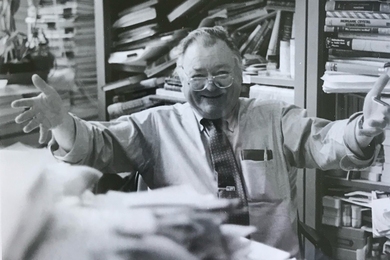The Institute Dining Review Working Group, which has been studying ways to improve MIT's food service, has released an interim report that includes a series of alternatives for various components of the present system.
The working group and its advisory board were formed last summer by William R. Dickson, senior vice president, and Rosalind Williams, dean for undergraduate education, to develop a new framework for campus dining that will satisfy the needs and desires of the MIT community. Its findings are available for review and comment on the Institute Dining Review Web site at <http://web.mit.edu/committees/fswg>.
The interim report reveals some dissatisfaction at MIT among students, staff and faculty regarding current dining options. Students are principally concerned with what they view as poor quality, high cost and lack of service during some hours of the day, especially for dinner after 7pm. Staff and faculty cited poor quality and overcrowded facilities at lunch time. Faculty members also expressed concern that the current system does not serve the educational mission of the Institute well, and may not provide students with adequate nutrition and opportunities to socialize.
In its interim report, the Dining Review group identified and proposed alternatives for basic food-service elements: management and operations, providers, site preparation, personal cooking, residential dining and meal plans.
The Dining Review conducted a community survey that included meetings with students at all graduate and undergraduate residence halls and a sampling of ILGs; open meetings with students, staff and faculty at central dining facilities (Sloan, Walker and Lobdell); focus groups with students, staff, faculty and alumni/ae, and discussions with representatives of various campus groups and constituencies.
Dining Review members also completed extensive research on dining services at other universities, including site visits and a survey of "best practices" conducted on the Internet and through a phone survey with dining services staff at several colleges and universities.
Students are hopeful that the new system will provide better options and more flexible hours. "Eating is one of the few times of the day that MIT students can relax, period," an East Campus resident said. "It's really important to have it be an experience that we can look forward to, both in terms of the food and having time to talk and enjoy our friends and classmates."
"This process can have a broad, positive impact on campus life at MIT," said Phil Walsh, committee chair and director of the Campus Activities Complex. "Our work shows that there's room for improvement in the system, and that there are lots of ways to provide a dining program that supports healthy eating as well as providing opportunities for socializing and community building campus wide. Our next challenge is to design a framework that best meets the needs of the MIT community, and we're counting on the community to give us lots of feedback by responding to the information on our Web site."
The Institute Dining Review Working Group welcomes e-mail comments on the interim report as well as on dining services in general. Its e-mail address is <fswg@mit.edu>.
A version of this article appeared in MIT Tech Talk on March 5, 1997.





